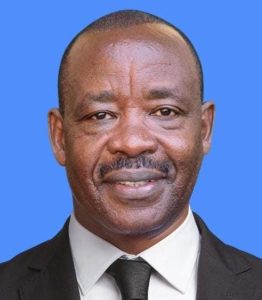Experts Wary of Climate-induced Stress on Drought-hit Families in the Horn of Africa

Unlike his Turkana tribesmen whose livelihood revolve around rearing livestock, Jacob Ebenyo, 54 never depended so much on his animals.
His primary call, he says, “has been pastoring God’s flock,” referring to ministering at the village church in Kodopa location of Loima sub County, Turkana County, north west of Kenya that boarders south Sudan.
However, for once in many years, Ebenyo has been distracted and gotten concerned with the livestock his family owns. The ongoing drought is decimating them in their hundreds.
Like his neighbours, Ebenyo spends sleepless nights wondering which of his surviving animals will hold on to life until the rains come.
Each passing day, neighbours report of many animals that succumb to the drought.
“People are distraught. In fact many men are stressed and some suffer from depression brought about by loss of the ability to find pasture and water for their livestock. With the death of the animals, men can no longer provide for their families and so their sense of dignity and security,” said Ebenyo.
So dire is the situation that experts at the African Coalition of Communities Responsive to Climate Change (ACCRCC) have called for urgent action to lessen the stress and hazards due to the ongoing withering droughts in the East and Horn of Africa.
Dr Pamela Kaithuru, an expert at the Kenya Meteorological Department and who consult for the ACCRCC sad the drought being experienced in Kenya and the horn of Africa is hitting communities, economies and ecosystems hard.
Drought in East Africa has worsened following consecutive failed rainy seasons combined with heightened conflict, related population displacement, and COVID-19 restrictions.
The FAO report of high food prices, which continue to impede food availability and access, leaving more than 58 million people in conditions of acute food insecurity.
The situation is worsening this year – especially in Ethiopia, Somalia and parts of Kenya. Southern Madagascar is also suffering from acute drought.
The Kenya’s National Drought and Management Authority on Wednesday this week issued a statement on the worsening drought situation in the country.
According to Rebecca Miano, Kenya’s Cabinet Secretary for East African Community, the situation in the arid and semi arid lands (ASALs) remain critical due to the late onset and poor performance of the much-anticipated October to December 2022 short rains, coupled with four previous consecutive failed rainfall seasons.
Currently, nine out of the 22 arid and semi-arid (ASAL) counties have been termed as in “Alarm drought phase while 13 counties are in Alert drought phase,” according to Ms Miano.
“The worsening crisis shows how climate change threatens the lives and livelihoods of hundreds of thousands of people and destabiliizing communities. Worse is the hidden stress individuals within these areas go through,” said Dr Kaithuru.
Dr Kaithuru adds that as a result of the ongoing drought and other impacts of climate change, there is a notable increase in health related challenges, more-so psychological and mental wellbeing of individuals and vulnerable communities.
She said that the situation is aggravated by the fact that most economic activities in the Greater Horn of Africa (GHA) are dependent on weather and climate.
The region is currently struggling from the vagaries of climate change manifest in extreme events of prolonged depressed rainfall for several rainfall seasons.
For example, a recent report by ICPAC on the June to September 2022 Forecast season, which contributes 70% of the total annual rainfall for the Region, was forecast to be below normal for at least three countries.
ICPAC is a Climate Center accredited by the World Meteorological Organization that provides Climate Services to 11 East African Countries in the IGAD (The Intergovernmental Authority on Development (IGAD).
Dr Kaithuru’s assertion agrees with the State of the Climate in Africa 2021 report by World Meteorological Organization (WMO) Africa’s climate has warmed more than the global average since pre-industrial times (1850-1900).
The report showed that extreme weather and climate change are undermining human health and safety, food and water security and socio-economic development as result of rainfall patterns disruption, and shrinking of key lakes, which threaten to aggravate conflicts and displacement.
Africa only accounts for about 2% to 3% of global greenhouse gas emissions but suffers disproportionately from the results.
“Temperature increase, heat waves, extensive floods, tropical cyclones, prolonged droughts, and sea level rise resulting in loss of lives, property damage, and population displacement, undermine Africa’s ability to achieve its commitments to meet the targets of the United Nations Sustainable Development Goals (SDGs) and the African Union Agenda 2063,” said Ambassador Josefa Leonel Correia Sacko, Commissioner for Agriculture, Rural Development, Blue Economy and Sustainable Environment at the African Union Commission.
Currently only 40 percent of the African population have access to early warning systems to protect them against extreme weather and climate change impacts.




